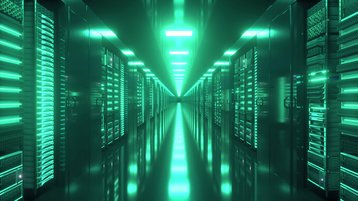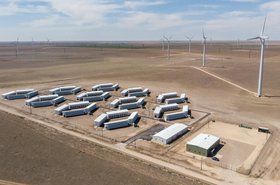The energy consumption of AI is staggering. Training a single deep learning model can consume as much electricity as multiple households use in a year. On average, processing a ChatGPT query requires nearly ten times the energy of a standard Google search, highlighting the growing energy demands of AI-powered services.
Historically, data centers maintained a relatively stable electricity consumption even as workloads increased, thanks to efficiency improvements. However, as the pace of these gains slows and AI adoption accelerates, Goldman Sachs Research estimates that global data center power demand will surge by 160 percent by 2030.
Currently, data centers account for 1-2 percent of worldwide electricity consumption, but this figure is expected to rise to 3-4 percent by the decade’s end.
The shift toward green data centers
In response to these challenges, the evolution of green data centers has become an industry-wide priority. Sustainable data center design now integrates innovative solutions to reduce environmental impact while maintaining the high-performance computing necessary for AI applications.
One of the most critical advancements is the adoption of renewable energy sources. Leading organizations are investing in solar, wind, and hydroelectric power to reduce their reliance on fossil fuels and lower carbon emissions. For example, Google has committed to operating entirely on carbon-free energy by 2030, leveraging solar and wind farms across multiple continents, while Microsoft has pioneered the use of underwater data centers powered by offshore wind.
Beyond renewable energy adoption, the industry is revolutionizing data center cooling methods. According to IDC, about 22 percent of data centers are using liquid cooling, but the market is expected to grow significantly between 2023 and 2032. The reason for the spike in interest is the innovation in liquid cooling strategies, such as hybrid cooling and direct-to-chip cooling.
Additionally, hyperscale data center providers are strategically locating facilities in colder climates to harness natural cooling and further optimize energy use.
Next-generation hardware
The sustainability of AI computing also depends on advancements in energy-efficient hardware. Semiconductor manufacturers are designing processors that maximize computational power while minimizing energy waste.
AI-specific accelerators, such as neuromorphic chips and photonic processors, offer promising alternatives by emulating the efficiency of biological neural networks or leveraging light-based data transmission to reduce power consumption.
AI is also being deployed in data centers to enhance operational efficiency. Machine learning algorithms can predict workload demand, dynamically allocate computing resources, and optimize power consumption in real time.
These AI-driven management systems ensure that energy is used only when necessary, preventing wastage and improving overall sustainability. Additionally, Edge computing solutions are gaining traction, decentralizing data processing to reduce latency and lower the power required for AI-driven tasks.
Overcoming challenges in the green data center transition
Despite significant strides in sustainable data center technology, the transition to greener infrastructure presents both financial and operational challenges. Retrofitting legacy data centers with energy-efficient solutions necessitates substantial investment, and balancing the reliability of renewable energy sources with fluctuating demand remains a complex endeavor.
Data center operators must navigate regulatory requirements, energy storage constraints, and supply chain disruptions to effectively achieve their sustainability objectives. As they endeavor to align their IT infrastructure with sustainability goals, managed IT service providers play a pivotal role in facilitating the transition to green data centers.
AI continues to shape the future, and the demand for sustainable data center solutions has never been more urgent. The green data center revolution is not just a trend but a critical response to the growing environmental impact of AI technologies. With continued innovation and investment, the future of AI-powered computing can be both advanced and environmentally responsible.





